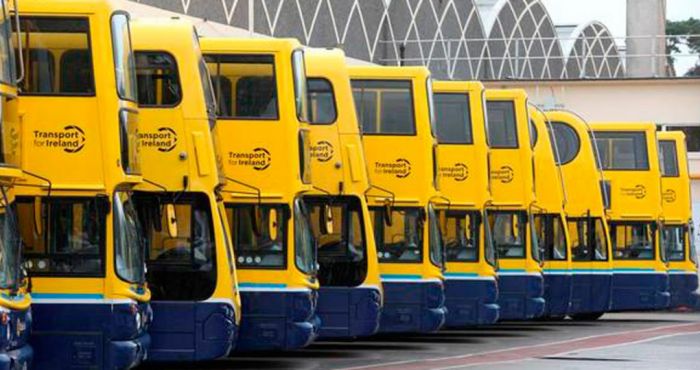Throughout my post-pandemic college experience, I have been lucky enough to visit a number of different European cities. Perhaps it is the result of general curiosity or perhaps it is indicative of the “to emigrate or not to emigrate” dilemma, but my arrival home from these trips tends to involve a review of the strengths and weaknesses I identified in the respective location. Anyone who has the misfortune of asking me about my trip receives a detailed response as to the various aspects that induced my awe or derision. Notably, my detailed response tends to both start and end with phrases along the lines of “and you should have seen the public transport!”. My inadvertent love of discussing public transport is akin to the desire of many older people to discuss cultural “wokeness”: I’ll bring it up at the first opportunity in any given context and despite a blatant lack of applicable information I’ll share my opinions with the confidence of an expert.
Researchers have carried out studies determining how long the average person will spend dedicated to certain activities throughout their life. On average we will spend almost a third of our life asleep, 4.5 years eating and 1.3 years exercising. It’s easy to guess that these studies were not carried out in Dublin, because if they were there would also be a statistic to inform us of the number of hours spent waiting at a Dublin bus stop. Frankly, it’s a statistic I dread to envisage. Almost anyone who has ever taken a form of public transport in Dublin will have a delay tale they can regale. However, it’s not just about colloquial anecdotes. In 2022 the National Transport Authority (NTA), fined Dublin Bus almost €1.5 million and Go-Ahead was fined over €850,000. The company operating LUAS were hit with penalties totalling €2.67 million. These statistics provide an overall picture of a system that is infamous for its inefficiency. But the smaller picture is made up of the thousands of commuters who are forced to rely on an inherently unreliable commute.
In Paris, Valencia or Zurich, the various public transport options allowed us to make plans based on where we wanted to go. In Dublin, if branching outside of the city centre, we make plans based on where the bus wants to go. This flaw in the infrastructure persists despite the fact that Dublin is not just a capital city, it is also a primate city. For anyone who needs a refresher on their junior cert geography terms, a primate city is defined as one that has at least twice the population of the next biggest city. A disparate level of the economic, cultural and political influence of the country resides in Dublin. This is an issue in itself, and the fact that Dublin offers any possibility of a public transport route is more than can be said of many more rural parts of the country. There is no question that we need a stronger and better connected public transport system that extends beyond Dublin, but we simultaneously need one that extends beyond midnight.
I recognise that there is a privilege in this statement. As if, at the simple suggestion that I want to get public transport home at night, all the other factors must simply fall into place at my whims. I am not naïve as to the demands this places on the service, the employees, or the increased levels of anti-social behaviour always noted in line with this debate. However, a late night public transport offering is neither a brand new concept nor an impossible task. We have watched and benefited from the late night services of other countries but most importantly, we have also watched and benefited from the temporary late night services of our own system. Throughout the busy socialising month that was December, peak weekend nights saw limited extensions applied to the public transport system. Certain trains ran until 3am, LUAS operated a tram every fifteen minutes until 3am and Dublin Bus operated late night bus schedules. On the occasions that I took one of these routes, the services were packed. The need and desire from commuters exists, but the consistent service doesn’t.
That any city, never mind a capital and primate city, needs to be functioning and well connected is without question. But extending public transport does more than support the functionality of Dublin. It supports late night workers, it supports the environment, and it supports safety. The undeniable need for a better system is visible every Friday and Saturday night when groups of students huddle together on the streets of Dublin and frantically try to refresh their cost-inducing taxi apps. Employees who support the economy with their late night work are excluded from the option of commuting from work by public transport. And despite reminders of the environmental benefit of choosing a bus or a LUAS, our transport infrastructure is designed in a manner that perpetuates a reliance on private cars.
For all that I argue for a late night public transport system, I recognise it cannot happen overnight. But it can start to happen. Perhaps it starts with additional services one weekend night per week or perhaps it means extending operating hours even marginally. The long-term plan is to be able to hop onto public transport and experience a smooth and seamless journey from any place or at any time. However, if the Metro saga has taught me anything about long-term public transport plans in Ireland, perhaps sticking to smaller short-term targets will reap the greatest benefits to start. In the initial stages, all or nothing are not the only options that will provide benefit. Public transport in Dublin is dubious at the best of times, but those times need to start including the hours after midnight.







